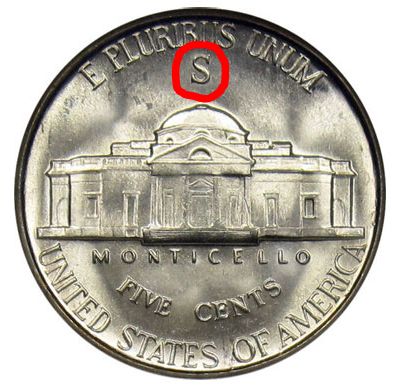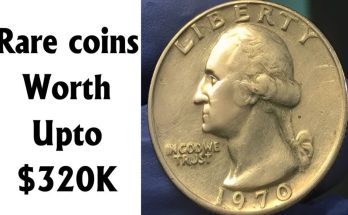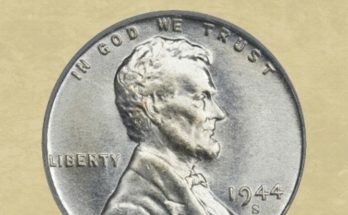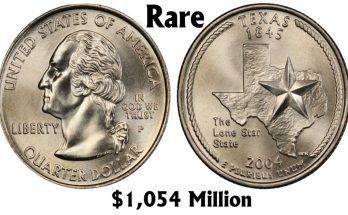Find out what Jefferson nickels are made of silver. Learn what to look for when identifying silver war nickels and other silver coins.
Nickels minted in the United States between 1942 and 1945 are made of 35% silver. These are commonly known as “silver war nickels.”
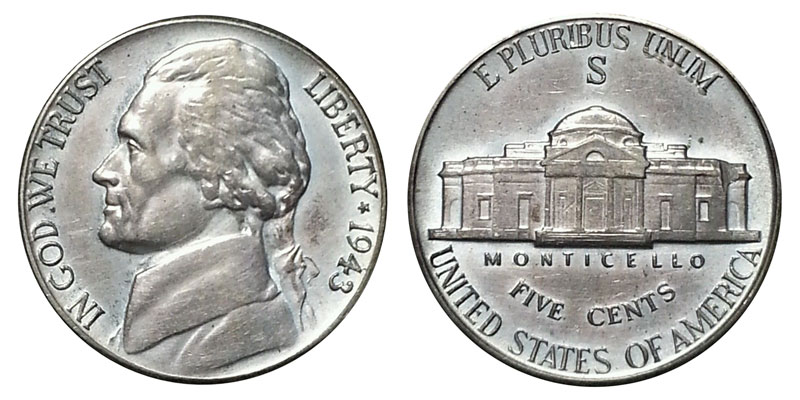
Normally all other nickels are composed of 75% copper and 25% nickel. Due to the pressing need for industrial metals like nickel during World War II, five-cent coins were actually made from 35% pure silver during the duration of the war. The rest of the alloy was made up of copper (56%) and manganese (9%).
Interestingly, using this alloy meant that vending machines and coin-operated devices would still recognize and accept the silver nickels.
P.S. — Want to listen to this post?
How to Identify Silver War Nickels
At first glance, these silver nickels are difficult to distinguish from their copper-nickel counterparts. They look like any other old nickel to most of us. You’ll see the same portrait of Thomas Jefferson on the obverse. Even the color is virtually identical.
There are a few key visual differences you can keep an eye out for, however.
The easiest way to check for a silver war nickel is the year-date on the coin. All nickels produced from 1942 to 1945 use the 35% silver composition.
On the reverse (tails) side of the coin, you’ll still find the familiar building known as Monticello, Jefferson’s famous estate that he supposedly designed himself.
However, only the silver war nickels will place the mintmark on this side of the coin. The letter will either be a P, D, or an S prominently placed above Monticello.

How to Tell If Your Coins Are Silver
Silver war nickels aren’t the only valuable coins you might find in your spare change. There are, in fact, several other silver coins you could potentially come across—and they’re actually 90% pure silver.
Chief among these are silver dimes. They generally come in three different varieties:
- Barber dimes (1892-1916)
- Mercury dimes (1916-1945)
- Roosevelt dimes (1946-1964)
Because of their relatively small size, quite a few of these dimes have survived in circulation. Less often you can still find 90% silver quarters, as well.
Coin dealers usually sell bank rolls or large bags of this “junk silver” grouped together by face value. Common increments are $100 or $1,000 face value.
![coin rolls boxes[1]](https://cdn-img.gainesvillecoins.com/blog/2022/04/coin-rolls-boxes[1].jpg) Boxes of bank rolls of coins
Boxes of bank rolls of coins
This works because the amount of fine silver (by weight) in each coin denomination was roughly proportional to their face value.
In other words,
- a silver dime (10¢ face value) contains approximately 1/5th as much silver as a silver half dollar (50¢ face value);
- a silver quarter (25¢ face value) contains approximately 1/4th as much silver as a silver dollar (100¢ face value);
- and so on.
What Other Coins Are Silver?
Even in the United States, you may occasionally come across foreign silver coins in circulation. The most common are 80% silver coins from Canada.
Canadian 80% silver coins (quarters, half dollars, and dollars) were minted between 1920 and 1967. Prior to 1920, the 92.5% pure (.925 fine) sterling silver standard for British coins was used.
Some commemorative coins and proof sets issued by the U.S. Mint are still composed of 90% silver today in limited quantities.
The key thing to know: All U.S. dimes, quarters, and half dollars minted in 1964 or earlier are composed of 90% silver. Keep this fact in mind any time you decide to buy silver.
There are very specific dates for the Kennedy half dollar and Eisenhower dollar that are also made of 40% silver. Check the infographic below for more details!

